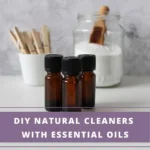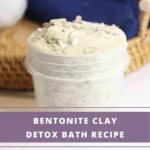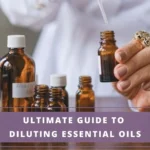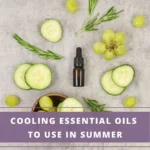As an Amazon Associate I earn from qualifying purchases. See Full Disclosure Here
Are you tired of the overwhelming scents and harmful chemicals found in commercial perfumes? With these essential oil perfume recipes, that should be a problem soon forgotten.
Essential oils are natural, plant-based extracts. Each extract has its own unique aroma depending on the plant from which it is extracted.
Once you learn the basics of how to make perfume with essential oils, you can experiment with different scent combinations to create your own customized perfumes that are toxin-free.

This beginner’s guide dives into the art of perfume-making with essential oils, from understanding scent categories to crafting your unique signature blend.
Why Make Your Own Essential Oil Perfumes?
Essential oils have been used for centuries in perfumery due to their captivating scents and therapeutic properties.
Unlike synthetic fragrances, which often contain harmful chemicals, essential oils are derived from plants and offer a natural alternative.
By harnessing the power of essential oils, you can create perfumes that not only smell amazing but also provide various health benefits. Whether you’re seeking a calming floral scent or an invigorating minty aroma, essential oils can fulfill your olfactory desires.
Getting Started: Understanding Aroma Families & Scent Categories
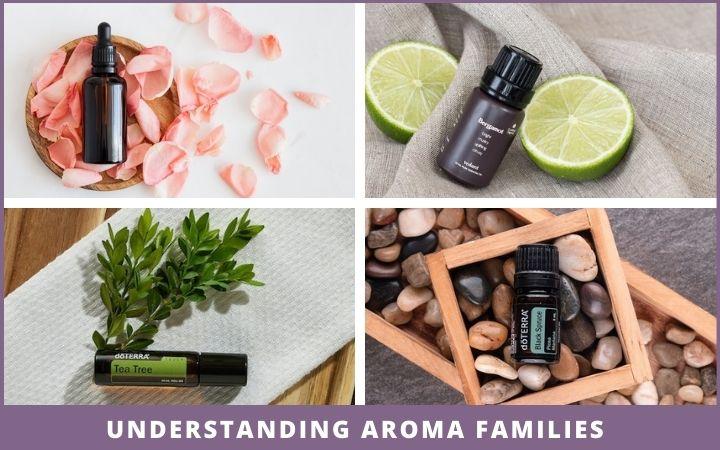 To create a well-balanced and harmonious perfume blend, it’s crucial to understand scent categories.
To create a well-balanced and harmonious perfume blend, it’s crucial to understand scent categories.
Essential oils can be classified into 8 aroma families, each with its distinct characteristics. By familiarizing yourself with these categories, you can make informed choices when selecting oils for your perfume.
Here are some popular scent categories and their corresponding essential oils:
1. Floral Aroma Family
• Jasmine: Known for its calming properties and aphrodisiac qualities.
• Ylang ylang: Helps relieve stress, improve mood, and enhance libido.
• Lavender: Renowned for its fresh and soothing scent.
• Neroli: Alleviates stress, promotes circulation, and uplifts mood.
List of Floral Essential Oils and their benefits
2. Citrus Aroma Family
• Bergamot: Offers a refreshing and uplifting aroma.
• Orange: Provides a sweet and zesty scent.
• Grapefruit: Energizes and invigorates the senses.
• Lemon: Has a cheerful, energizing aroma.
List of Citrus Essential Oils and their benefits
3. Camphoraceous Aroma Family
• Peppermint: Provides a cooling and invigorating scent.
• Eucalyptus: Offers a refreshing and uplifting aroma.
• Lemongrass: Adds a zesty and citrusy note to perfumes.
4. Herbaceous Aroma Family
• Rosemary: Offers an invigorating and herbaceous scent.
• Basil: Adds a fresh and aromatic note to perfumes.
• Clary sage: Provides a calming and herbal fragrance.
5. Spicy Aroma Family
• Clove: Offers a warm and spicy aroma.
• Cinnamon: Evokes a sense of warmth and comfort.
• Ginger: Adds a zingy and fiery note to perfumes.
• Nutmeg: Is hugely popular during the cooler seasons.
6. Woody Aroma Family
• Sandalwood: Known for its warm and earthy fragrance.
• Cedarwood: Evokes a sense of grounding and tranquility.
• Patchouli: Adds depth and richness to perfumes.
7. Resinous Aroma Family
• Frankincense: Offers a resinous and exotic aroma.
• Myrrh: Has an unusual scent that’s warm spicy, woody, and earthy.
8. Earthy Aroma Family
• Patchouli: Adds depth and complexity to perfumes.
• Vetiver: Provides a smoky and woody aroma.
Special Mention
• Vanilla: Provides a sweet and comforting scent. Although vanilla is not an essential oil – it is an extract obtained from vanilla beans- it is a popular addition in essential oil perfume recipes.
How to Make Perfume with Essential Oils: What You Need to Know About Perfume Notes
All essential oil perfume recipes essentially consist of a combination of aromatic essential oils in an alcohol base.
Before getting into the different ways of making perfume with essential oils, it’s important to understand how different scents (in this case, essential oils) work together.
Any perfume has three distinct notes – base note, mid note, and top note.
- Base notes are the heaviest scent of the three. They last the longest and also help extend the longevity of the top and middle notes.
- Top notes are the lightest scents. They are also the fastest to fade away.
- Mid notes are in between the two, both in terms of the scent and how long they last. They are the heart of the perfume.
When you smell a perfume, the first scent you get is of the top notes. This is followed by the mid notes and then the base notes.
Perfume manufacturers use various combinations of natural and synthetic ingredients with these three notes to create their signature perfumes.
Since we’re making perfume with essential oils, we need to first understand the fragrance notes of different oils.
Essential Oils & Their Perfume Notes
Essential oils can be grouped into 3 categories depending on their fragrance notes – base notes, mid notes, and top notes.
Essential Oils with Base Notes: Musky and powerful scent
- Vanilla
- Cedarwood
- Ylang Ylang
- Vetiver
- Patchouli
- Sandalwood
- Frankincense
- Myrrh
Essential Oils with Mid Notes: Not too overpowering but not very light either
- Lavender
- Rose
- Geranium
- Roman Chamomile
- Cinnamon
- Jasmine
- Nutmeg
Essential Oils with Top Notes: Very light scent that fades away quickly
- Bergamot
- Lemon
- Neroli
- Wild Orange
- Peppermint
- Spearmint
- Lemongrass
- Lime
When making your perfume, you select your oils and add them to your perfume bottle in order from base to top. Then let it sit a while to let the scents blend.
As it sits, the different notes start to blend and the perfume develops its unique scent.
If you check your perfume throughout the day you will notice the scent changing ever so slightly till it blends completely and develops into your customized perfume.
Alcohol, which is one of the ingredients used when making perfume with essential oils, changes the composition of the oils over time.
This set of Top 14 Essential Oil Singles Set by Plant Therapy includes an assortment of essential oils with base, mid, and top notes. With this one set, you get all the essential oils you need to make an exciting variety of perfumes. What’s more, you’ll get all of it at a fraction of what it would cost you to buy the oils individually.
Related: Blending Essential Oils – Mastering The Art Of Blending Notes & Aromas
Essential Oil Perfume Recipes
Ready to make your own perfume with essential oils? Here’s an easy recipe to start with.
Remember, you can adjust any of the ingredients to create any scent you like. When adjusting the ratios, add one drop at a time, taking time to smell the mixture often. Stop when you like the resultant scent.
– 6-10 drops of any essential oil with a base note – Vanilla, Cedarwood, Ylang Ylang, Sandalwood, Vetiver
– 12-15 drops of any essential oil with a mid note – Lavender, Chamomile, Rose, Geranium
– 6-8 drops of any essential oil with a top note – Bergamot, Neroli, Wild Orange
– 2 ounces alcohol (I use 100% Vodka)– This helps to preserve and meld the scents
– 2-oz. dark glass bottles with tight-fitting tops, spray tops with caps or cork tops
– Small funnel or funnel-shaped coffee filter
– Vodka, 100% Proof
DIY Perfume Instructions
Step 1. Add the essential oils one at a time in your dark-colored spray perfume bottle. Start with the base note, then add the mid-note and lastly the top note essential oils.
Step 2. Leave the essential oil mixture in the bottle for a few days to let the aromas meld.
Step 3. After a few days, add the alcohol and close the cap tightly.
Step 4. Shake the bottle gently to let the alcohol blend with the essential oils.
That’s it! Your homemade essential oil perfume is done.
Keep your perfume in a cool, dark place, and let all the ingredients meld together slowly. Both, the dark-colored bottle, and the dark storage space will preserve the integrity of the perfume.
While you can use your homemade perfume right away, it’s a good idea to let it sit for a week or two. This gives the aromas sufficient time to meld together.
Note: This perfume does not use carrier oil and may not be suited for use with a rollerball bottle as the perfume comes in direct contact with the skin. It is better suited to be used as a perfume spray.
How to Make Perfume with Essential Oils: 6 Things to Keep In Mind
1. Think About What Type of Fragrance You Want To Create
Different essential oils belong to different aroma families such as citrus, floral, herbaceous, spicy, woody, earthy, resinous, or camphoraceous. Each of these families has their own distinctive fragrance.
To create a perfume with floral notes, use essential oils that belong to the floral aroma family. Essential oils from the citrus aroma family will give you a perfume with a light, refreshing scent, while those from the woody aroma family will create a perfume that has a distinctly outdoorsy scent.
You can of course mix essential oils from different aroma families to create a perfume with a unique aroma.
Before you start making your own perfumes with essential oils, take a minute to read more about the different essential oil aroma families.
2. Consider More Than Fragrance
Using perfumes with essential oils is a great way to smell good, but there’s more to essential oil perfume recipes than just their great aroma.
Essential oils have proven healing properties. When creating a homemade perfume with essential oils, give some thought to the therapeutic effect you’re hoping for as you pick your combination of oils.
Read: List of essential oils and their benefits: Handy reference guide
3. Buy High-Quality Essential Oils
The higher the quality of the essential oils you use, the better your perfume will smell. More importantly, you’ll benefit from the therapeutic properties of the oil without compromising your health.
This guide to buying essential oils includes everything you should look for to ensure you’re buying the highest quality you can afford.
These are my top 3 recommended essential oil brands. All three brands offer pure, high-quality essential oils at surprisingly reasonable prices.
Plant Therapy – Read my detailed Plant Therapy review
4. Write Down the Recipe
Keep a recipe journal handy before you start blending your perfume ingredients and make a note of every drop you add to the perfume blend.
Do this whether you are following a recipe or experimenting with your own perfume recipe. This way, when you stumble upon a blend you absolutely love, you’ll find it easier to duplicate it.
5. Make Small Batches
When making perfume with essential oils, always make smaller batches rather than larger batches.
Essential oils break down very easily, especially when you blend it with a carrier oil. Making a smaller batch will help maintain the integrity of the perfume. This goes whether you’re making perfume for your personal use or for gifting.
6. Store Your Home-Made Perfume Correctly
As you look around for perfume containers, you’ll find plenty of beautiful clear glass bottles. Don’t be tempted to buy these. Essential oils deteriorate faster when stored in transparent bottles. Exposure to sunlight causes the top notes in your DIY essential oil perfume to break down quickly, changing the scent completely. That would be a shame when you’ve taken so much trouble to create a customized perfume you love.
Also, avoid using plastic bottles as essential oils react with the plastic, resulting in contamination of the oil.
To extend the life of your homemade perfume and preserve the scent and therapeutic prosperities of the oils used, store your homemade perfumes in dark-colored glass bottles.
Precautions When Making Perfumes With Essential Oils
Do not use essential oils without your doctor’s permission if you are pregnant or breastfeeding. Some essential oils are dangerous for infants.
Essential oils are potent and can irritate your skin if you apply concentrated oil directly to your skin. When working on any DIY project involving essential oils, be careful not to spill any oil on yourself.
Always dilute essential oils with a carrier oil before applying to your skin.
Tips For Choosing Essential Oils To Create Your Perfume
When choosing essential oils for your perfume, consider both – the aroma family that the oil belongs to, and the health benefits of the oil.
It can take some experimentation to get the scent you are looking for, but what’s great about experimenting is that during the process you could stumble upon a perfume recipe that hits just the right note!
This article on Essential Oils and Their Aroma Families lists several oils that belong to the different families.
The essential oils mentioned below are popular additions to homemade perfumes. They smell amazing and offer some great health benefits too:
Lavender Essential Oil – Floral Aroma Family – Lavender has a rich floral aroma that helps calm the nerves, and reduces anxiety. If you struggle to get a good night’s rest, applying a lavender-based perfume before you go to sleep will help you relax and fall asleep.
Bergamot Essential Oil – Citrus Aroma Family – Bergamot has a very light, citrusy aroma that is calming and refreshing. It’s great for creating perfumes to use in the spring and summer seasons. Perfumes that contain bergamot essential oils are a great choice for anyone struggling with anxiety or depression.
Rose Essential Oil – Floral Aroma Family – Rose is known for its strong aphrodisiacal properties. Its heavy, sensual scent is a great addition to romantic perfumes for nighttime use. Rose essential oil also helps uplift emotions and fight depression.
Patchouli Essential Oil – Earthy Aroma Family – Patchouli has a rich, earthy scent that works great in perfumes for men. The aroma is amazingly grounding and helps stabilize the emotions.
Neroli Essential Oil – Floral Aroma Family – Distilled from the orange blossom, Neroli has a heavenly aroma and is a popular addition to many essential oil-based perfumes.
Orange Essential Oil – Orange has a fresh energizing scent that is known for its mood-boosting ability. An orange-based perfume is a great choice for reducing anxiety and uplifting your mood.
Where to Buy Essential Oils for Your Perfume Making Project
Making perfume with essential oils is a fun DIY project when you are looking to make gifts for family and is an added bonus.
One way to save money on your homemade perfumes and other DIY aromatherapy projects is to buy a set of essential oils instead of buying individual oils. Of course, it is equally important to pick up high-quality essential oils from a reputed brand.
I highly recommend Plant Therapy’s Top 14 Essential Oils Set for your homemade perfumes. Buying a set works out much cheaper than buying individual oils. With this set, you get a nice variety of high-quality oils from different aroma families so you can create a variety of scents. This is particularly beneficial if you’re making customized perfumes to give as gifts.
If you’d like to explore some more options with fewer bottles included, this is a must-read for you Best Essential Oil Sets – Save Money On High Quality Oils
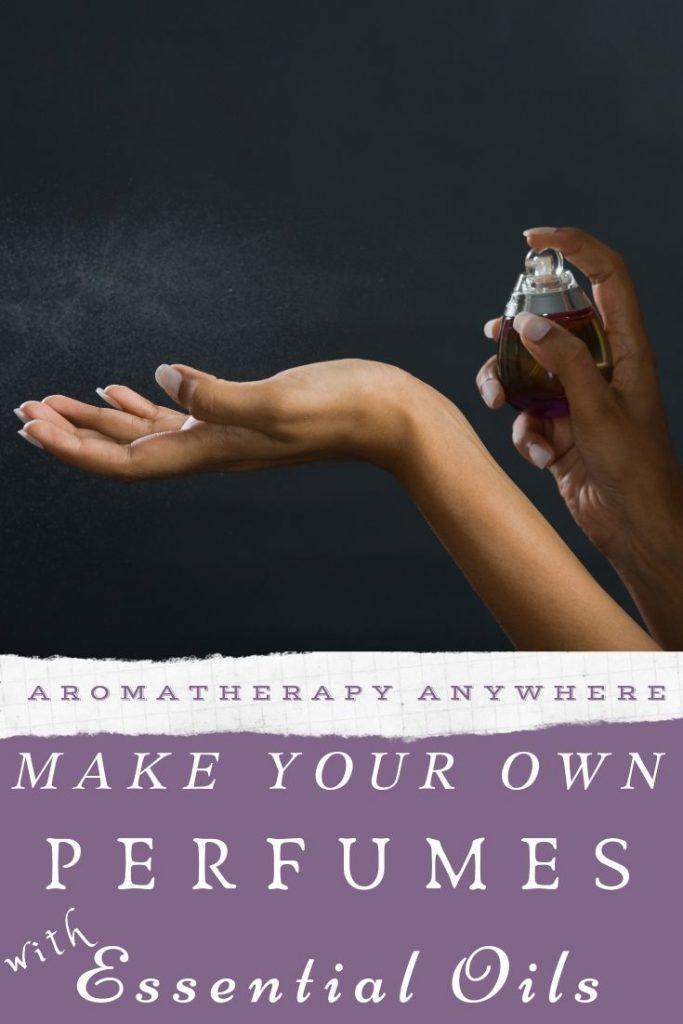
Disclaimer: This information is not intended to serve as medical advice. Please consult your doctor before using any natural medication or if you experience any unusual symptoms. See Full Disclaimer here.



